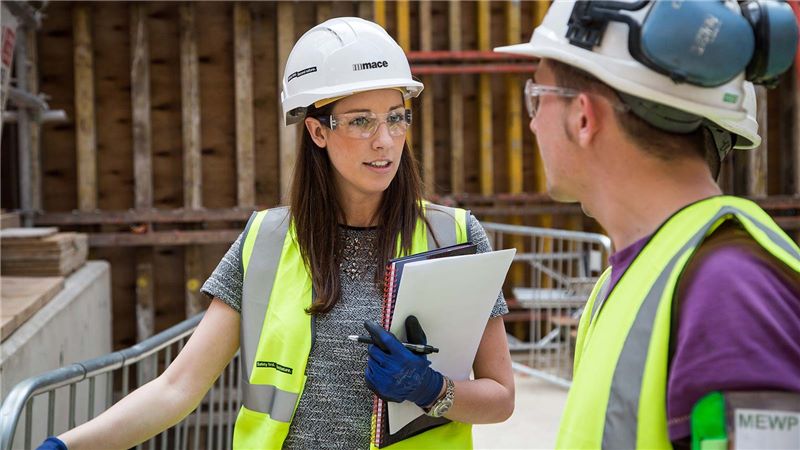Three keys to unlock big infrastructure success
Those of us involved in delivering big infrastructure projects understand that the scope and scale of such investments often means that the fabric of the surrounding communities will be forever changed; our aim is to ensure that this is for the better. In the construction industry, the complexities entailed in such programs present common challenges and opportunities, especially when it comes to effective execution. Defining what “effective” means for your project requires an understanding of the unique circumstances and priorities of the communities it will serve.
Given the civic nature of infrastructure programs, we in the construction industry have an obligation to act as responsible stewards of the public trust. This not only has to do with what we deliver, but how we deliver, ensuring that every dollar and decision contributes to the best possible outcomes, serving community interests.
Contractual collaboration
The first essential ingredient for successful megaproject delivery is collaboration codified by contractual provisions and governance protocols. Such provisions require shared accountability and cooperative problem solving to minimize conflicts and claims. This kind of collaboration hinges on clearly defined responsibilities, commitments, and incentives based on measures that truly drive performance to plan. This paves the way for excellence throughout the project lifecycle, from business planning and pre-construction through design, construction, and operation.
In our experience managing complex airport, highway and transit programs in every part of the world, collaborative contracts consistently realize on-time and cost-effective project performance, while also generating greater value and opportunities in surrounding communities. This has been a core component of our work delivering Metrolinx expansion programs in Ontario, Canada, where we’re serving as enterprise delivery partner for the GO Expansion to transform its rail transit service into a high-frequency system. We’re also supporting Metrolinx to deliver subway extension projects, including the Scarborough progressive design build, which marks the first time this type of collaborative contract is being used for a transit program in North America. In addition to extending service in the region, it is also providing growth opportunities for local workers and supply chain partners.
Integrated delivery discipline
The scale, complexity, and extended timeframes for mega programs present significant opportunities to unlock their greater value by applying integrated delivery as an overarching management discipline. Rather than managing elements of project design, engineering, construction, and operation independently from one another, we integrate planning, management and execution throughout complex programs. Not only does this save time; it also reveals synergies and interdependencies that enable us to optimize project resources and preempt risks.
An experienced delivery partner brings a breadth of skills including business planning; design and constructability; organizational and supply chain development; interface-, change-, and risk-management; value engineering and assurance; construction oversight; systems integration; and stakeholder engagement. In practice, it’s an all-encompassing management discipline powered by well-defined governance and inclusive collaboration.
The industry benchmark is the mega program we led for London’s 2012 Olympics, which included a host of new and redevelopment projects, the largest environmental cleanup ever undertaken in Europe, and every type of infrastructure, from property to public transit, as well as modular venues reestablished in other communities after the games. The program—delivered a year ahead of schedule and 10 percent below budget with no major injuries or deaths—set the standard for the world’s first ISO sustainable development certification. It remains relevant as the model for public infrastructure programs because in the decade since, it has transformed East London, contributing to the creation of 110,000 additional jobs, 11,000 new homes, and a tenfold return in socioeconomic value.
Resilience enabling sustainable outcomes
The most visionary infrastructure projects bolster resilience in the broader context, imparting environmental and socioeconomic strength beyond the here and now, respecting stakeholder aspirations to create an enduring legacy of opportunity and prosperity for future generations. In this sense, resilience (ensuring adaptability to accommodate future growth and changing needs) is a prerequisite to achieve truly sustainable outcomes. Considering social, environmental, and economic measures in the context of resilience promotes proactive management for near- and long-term benefits.
A great example is our work delivering Peru’s national reconstruction and resilience program—a government-to-government contract we’re delivering with partners to mitigate $5 billion in infrastructure losses from catastrophic floods that affected a million people. We jumpstarted this massive program, spearheading the delivery of 140 projects in the middle of the global pandemic. The partnership is already making a positive difference: Among 57 schools, healthcare facilities, and flood defenses delivered and 45 projects nearing completion, the new infrastructure withstood the test of a major cyclone to provide safe refuge for people across Peru’s flood prone central and northern regions.
Digital integration also played a significant role in ensuring truly resilient outcomes for the population. We maximized cloud computing and wireless connectivity to engage, develop and mobilize the local workforce, communities and suppliers. We trained local construction contractors on Building Information Modeling (BIM) to accelerate delivery and elevate capabilities locally, a resilience measure that proved transformational for the country’s building industry. BIM use in Peru grew from 20 to 40 percent in three years and was adopted as a national standard that will benefit developments for years to come.
We’re now applying our delivery discipline in the partnership progressing the Hudson Tunnel Project, itself one of the most significant resilience investments in America. Not only are we bolstering the busiest rail connection of Amtrak’s Northeast Corridor beneath the Hudson River; we are also generating equitable opportunities for diverse stakeholders and business partners to reinforce the socioeconomic resilience of the entire region.
As we see it, the greatest measures of infrastructure success are exemplified by programs that prioritize collaboration, integration, and resilience to maximize outcomes and positively transform the communities we serve. Powerful proof that for every feat of engineering we build, how we deliver matters just as much—arguably even more—to shape a brighter future for generations to come.











